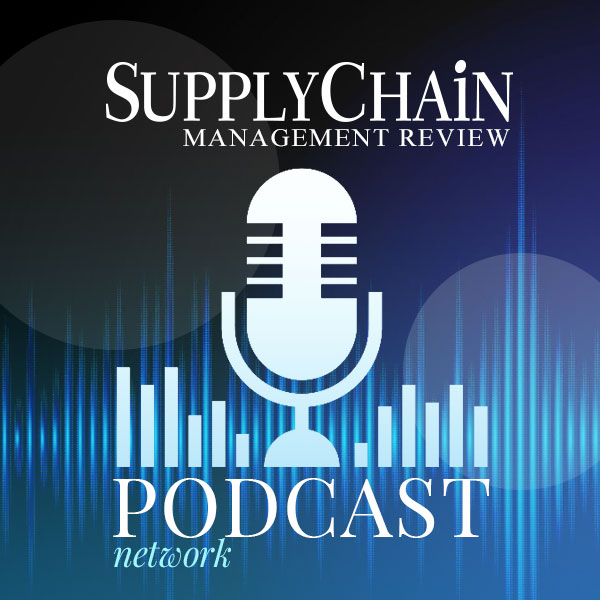In a recent Deloitte study, only 38 percent of executives say they are extremely or very confident that their supply chain organization has the competencies it needs today. Just 43 percent of respondents considered their supply chain organization to be excellent or very good when it comes to “strategic thinking and problem solving.”
Meanwhile, other signs point to the need for fresh ideas and new talent in the industry. After all, as Supply Chain Management Review has noted, study after study shows that for every new supply chain manager entering the workforce, two or more are retiring.
Colleges and universities offer a potential solution. Businesses and the higher education community are successfully combining forces to extend the classroom into real-world business projects. At the same time enrollments in supply chain-focused majors are increasing, businesses are seeing value from having students and professors investigate and relieve their pain points.
Here are two examples of how higher education and private industry are strengthening the future of the field.
Classroom Practicum
In one such example, a large wholesaler in the business supply industry was looking to improve next-day fill rates for their customers.
The company provided actual data and problem scenarios to the classroom. The professor divided the class into teams analyzing the same data, creating a “Shark Tank”-like environment where the teams competed by developing optimal solutions for the business—complete with project plans, scope documents, analytics and a presentation.
The result for the students was an interactive experience seeing the types of issues they will be tasked to solve once they enter the workforce. For the business, the result was seeing how the students approached the problem and worked together to problem-solve, along with their findings.
This partnership created the opportunity to build relationships with students who would fit in the organization, establishing a talent pipeline. The professor benefitted as well, as the business' leaders provided valuable insights to the class.
In this classroom-meets-real-world setting, new ideas have the space to succeed. Contrast that with the operational area of the supply chain, where we often don't have the answers, and we don't have best practices for now and the future.
Supply Chain Insights has found that 90 percent of companies are not making progress on key supply chain metrics such as cost, inventory, growth and return on invested capital (ROIC). Businesses need to move innovation occurring at the edge of the industry to the core of what they do.
Partnerships with higher education present an opportunity to challenge the fundamentals of the past and redefine the processes of the future.
Extending the Classroom
Another example of extending the classroom into a real-world business scenario is Elmhurst College's M.S. in Supply Chain Management program's capstone project.
One such capstone paired the program with a national hardware retailer looking to solve a staffing challenge as it implemented a hub-and-spoke distribution model. The student team operated as a consulting team evaluating the opportunity and developing a strategy to solve the challenge.
To provide the retailer partner the optimal solution, the students utilized the various courses from the program while spending a considerable amount of time on-site at the operation. As in the previous example, the students were tasked to develop a project plan, scope documents, analytics and a presentation.
This was the approach taken:
- Problem Analysis The team started by performing a problem analysis. It examined economic conditions and the current unemployment rates within the regions identified for the hub-and-spoke model. The team also assessed current challenges for the retailer in finding and retaining candidates for their distribution centers, as well as the company's historical change management approach.
- Observations The second step was to invest in learning first-hand the problem occurring by performing a gemba (“go see”) walk—a LEAN principle—within the operation to truly understand the current environment. The team observed each process undertaken by employees and gauged the complexity of the process. Students also engaged with the employees, performing a survey/questionnaire of the staff and developing an assessment report. To even better understand the process, the team then acted as new hires. This included participating in and evaluating the full training program. Each step was analyzed to identify non-value-added processes. Any that were determined to be too difficult or nonintuitive were then reworked.
- Recommendation
The team shadowed current employees and discussed possible process enhancements. They found productive answers to questions such as “If something could be added in the process to help make your workday easier, what might that something be?” Some of the “quick wins” included:
- Implementing LEAN principles of visual management, e.g. white boards for KPIs, clear indicators of where product should go, 5Sing work stations, etc.
- Designating spots for materials (e.g. pallets and boxes), along with a Kanban process eliminating the activity of locating materials to perform the tasks.
- Reducing the number of steps to complete the work by simplifying the tasks.
With the above improvements, the team recommended converting the hiring of 15 new full-time team members to eight part-time team members. It developed and implemented a shared workforce model on the shipping dock preparing freight for delivery to the stores. This model would establish set hours during the shift, identify the set number of positions needed and allow for the rotation of staff identified in the next step.
Finally, the team recommended tapping into an alternative workforce for the rotation of staff, including:
- Disability hiring
- Second chance hiring
Partnering with local agencies that have candidates from these alternative pools would help meet the company's required staffing needs. Agencies work with these candidates to provide job coaching and support as they acclimate into the business environment.
Developing Future Leaders
Both scenarios show winning examples of how businesses and the higher education community can team up to prepare future supply chain leaders—and also create talent pipelines for the participating companies.
What's more, these partnerships often result in “wins” for the business. The Elmhurst capstone project saw students implementing an updated hiring process for the distribution center that promoted important efficiencies.
Combining forces to extend the classroom into real-world business projects, creates a win-win scenario for the students and the businesses, in identifying and attracting future talent.
About the Author
Tim Engstrom is a lecturer in the Department of Business and Economics at Elmhurst College. In addition to teaching in the M.S. in Supply Chain Management program, he is vice president of supply chain shared services for Essendant in Deerfield, Illinois. He also has authored a handbook for disability hiring, the H.O.P.E. Handbook.
SC
MR


More Executive Education
- MIT CTL offering humanitarian logistics course
- AI, virtual reality is bringing experiential learning into the modern age
- Finding the Right Approach for Supply Chain Education
- Education vs. Training: Accommodating AI in the Worldwide Air Cargo Logistics Industry
- The changing face of supply chain executive education
- Women in Manufacturing Education Foundation announces 2022 class of Hall of Fame inductees
- More Executive Education
Latest Podcast

 Explore
Explore
The Academy News
- MIT CTL offering humanitarian logistics course
- AI, virtual reality is bringing experiential learning into the modern age
- Predicting stockouts: Enhancing FMCG resilience through data-driven insights
- Finding the Right Approach for Supply Chain Education
- The Supply Chain Triad
- Innovating Supply Chain Higher Education with Generative AI
- More The Academy
Latest Academy Resources

Subscribe

Supply Chain Management Review delivers the best industry content.

Editors’ Picks





